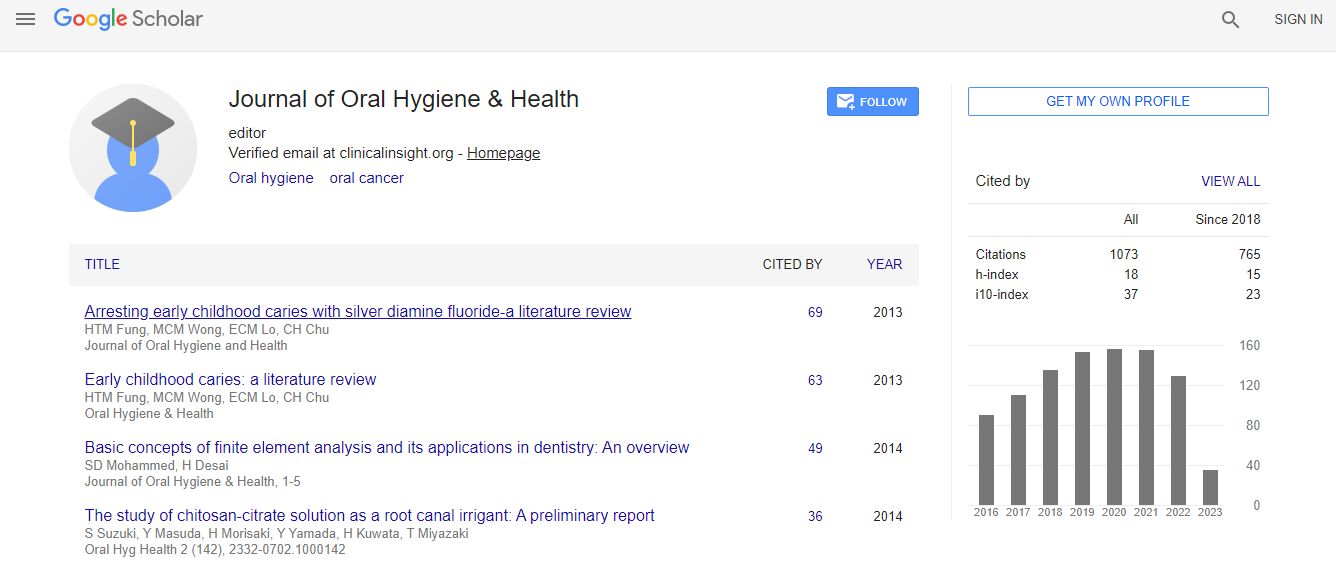Case Report
Knowledge and Public Perception of Dental Fluorosis in Children Living in Palestine
Lamis Abuhaloob1* and Yehia Abed2
1Ministry of Health, Palestine
2Department of Epidemiology, Faculty of Public Health, Al-Quds University, Palestine
- *Corresponding Author:
- Lamis Abuhaloob
Ministry of Health, Palestine
Tel: 00970597695117
E-mail: lamis.abu_haloob@yahoo.co.uk
Received Date: April 04, 2014; Accepted Date: April 26, 2014; Published Date: May 05, 2014
Citation:Abuhaloob L, Abed Y (2014) Knowledge and Public Perception of Dental Fluorosis in Children Living in Palestine. J Oral Hyg Health 2:133. doi: 10.4172/2332-0702.1000133
Copyright: © 2014 Abuhaloob L, et al. This is an open-access article distributed under the terms of the Creative Commons Attribution License, which permits unrestricted use, distribution, and reproduction in any medium, provided the original author and source are credited.
Abstract
Rare knowledge of dental fluorosis increases the risk of having it. Knowledge and public perception towards dental fluorosis is important factor in public health interventions and were not studied before in Palestine or Arabic countries.
Objective: To study the knowledge and the public perception of dental fluorosis among Palestinian children (aged 12-18 years old) and their mothers.
Methods: A cross-sectional study recruited stratified cluster random sample of 350 children aged 12-18 years and their mothers. Data of knowledge and public perception of dental fluorosis was collected through interview questionnaires with children and their mothers. Ethical approvals followed the guidelines of the Helsinki Declaration.
Results: Most children (99.4%) and all mothers did not know what dental fluorosis is and had not received information about it. The majority (99.7%) did not know dental fluorosis’s causes or prevention. Concerning the public perception of dental fluorosis, 87.7% of the children and 88.6% of mothers did not have a problem with fluorosed teeth colour.
Although all respondents felt that others with fluorosed teeth did not have good appearance, 96.9% of children did not hide their smile. Most of the mothers (99.7%) thought that the government should find an immediate solution for this problem.
Conclusions: Lack of knowledge about dental fluorosis increases the risk of having dental fluorosis in Palestine and Arabic countries. This suggests the importance of developing immediate preventive intervention for dental fluorosis. Suffering from unrest political circumstances and having high prevalence of dental fluorosis for decades could diminish the negative impact of having coloured teeth on children’s perception and personality.

 Spanish
Spanish  Chinese
Chinese  Russian
Russian  German
German  French
French  Japanese
Japanese  Portuguese
Portuguese  Hindi
Hindi 
